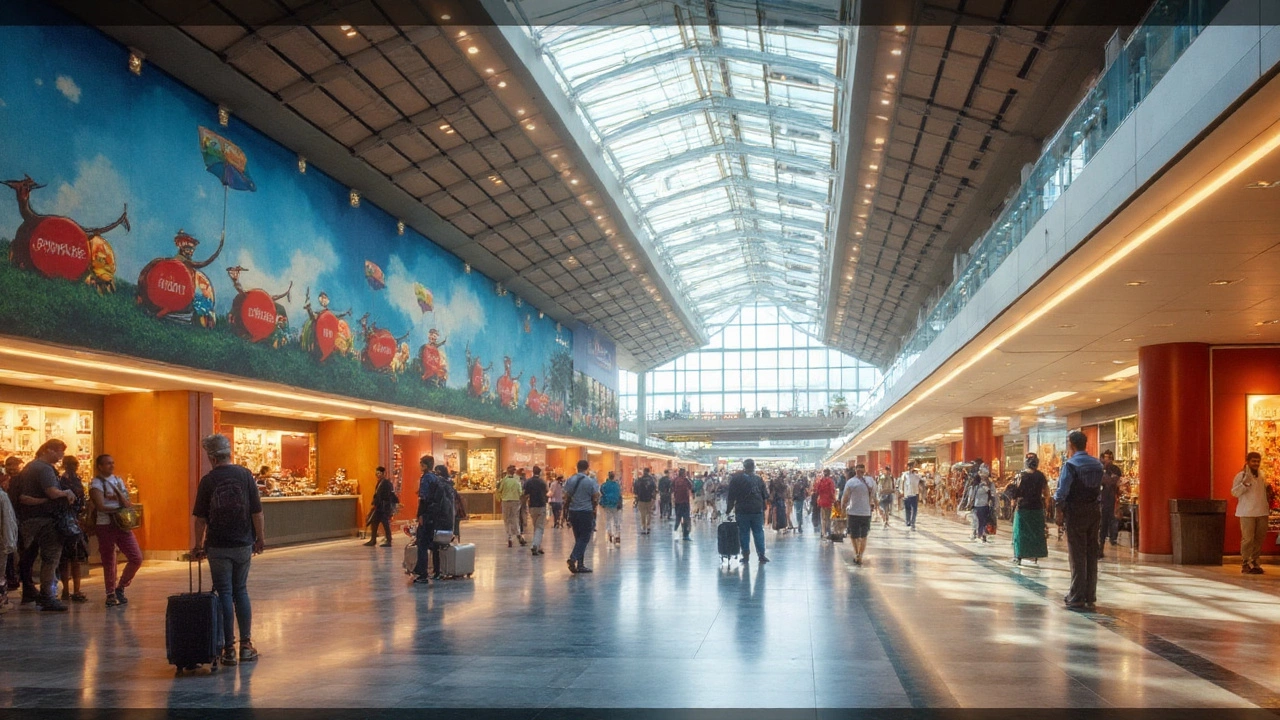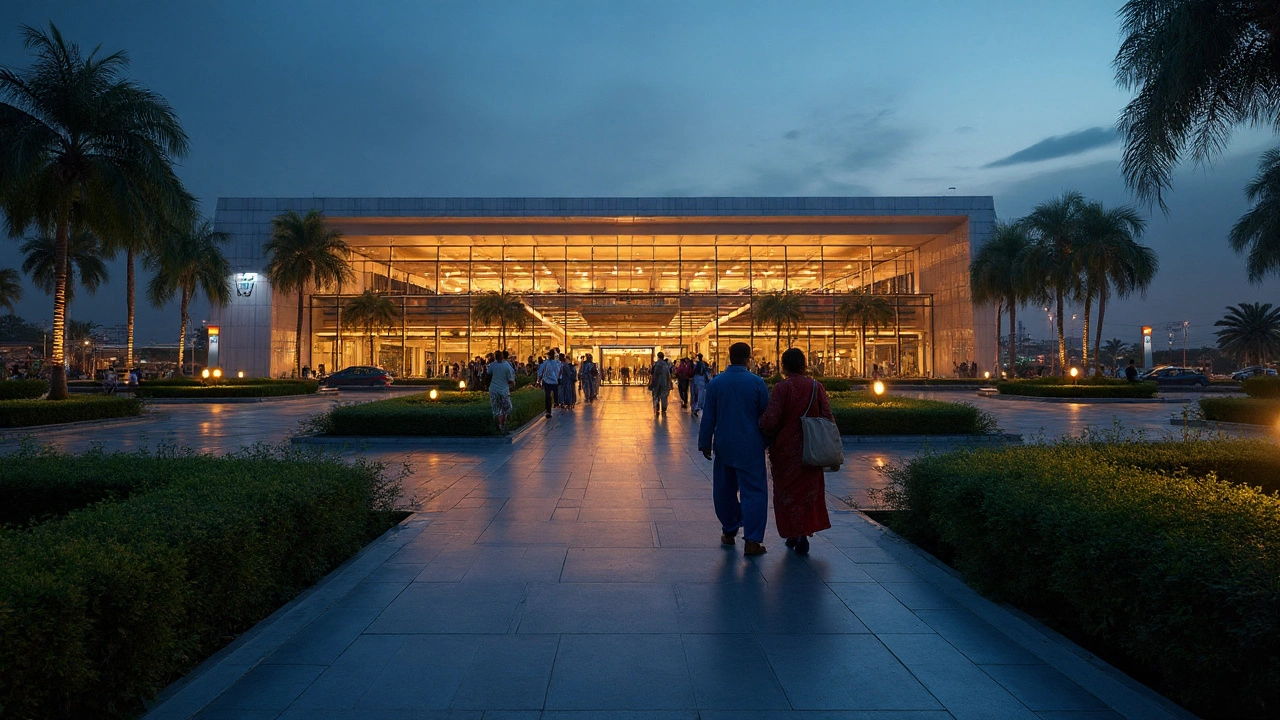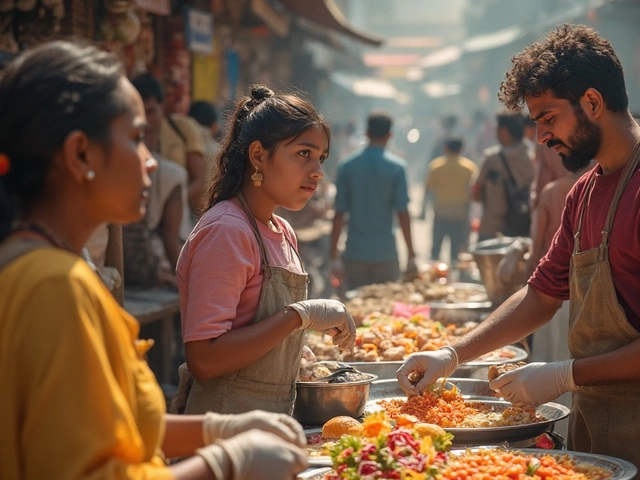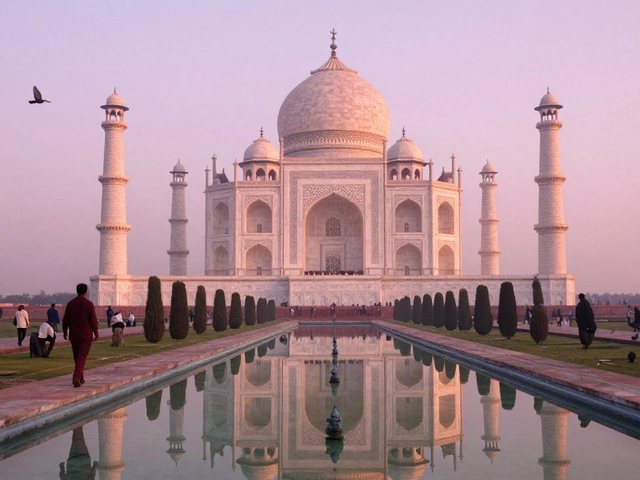Ever walked into an airport that made you want to miss your flight on purpose? When it comes to airport beauty, India surprises people who only expect chaos and queues. Here, travel sometimes feels more like a welcome than a routine. Impeccable architecture, local art that grabs your eye, views that make you pause — Indian airports don't just push people around. Instead, they bring a little bit of magic, culture, and flair right to your gate. And yes, a few of them break free from the cliches.
Why Airport Beauty Matters More Than You Think
First impressions last. Imagine landing in a new country and immediately being hit by a plain, characterless terminal. Now flip that: bright colors, clean lines, artwork that seems to dance, and an atmosphere that says "travel can be joyful." For most travelers, airports are a blur of security checks and long walks. But places like Chhatrapati Shivaji Maharaj International Airport in Mumbai or the new Bangalore Airport don't just push people through - they introduce you to a side of India you might never see elsewhere.
Airport beauty isn't just about glass domes or shining floors. It's sensory. The aroma of coffee mixing with the subtle scent of mogra flowers in the air at Hyderabad Airport, the soothing sounds in the Kerala terminals, and sunlight falling in patterns on marble floors — these moments stick. The design influences mood, makes waiting less painful, and creates a setting where travel feels less like a chore and more like an event. Even small things like the choice of local materials, thoughtful seating, or digital art installations can flip the script for travelers.
And here's the thing you don't always realize: airports are often where locals go too, not just departing tourists. The public art and local design represent what the region cares about. In India, airports are like a teaser trailer for the whole city—Hyderabad's fragrant food counters, Bangalore's lush indoor gardens, Mumbai's modern art corridors. When international rankings praise Delhi Airport or Mumbai for design and comfort, they're not just patting the country on the back—they're saying, "This is a real reason to travel, not just a place to get stamped and sent away."
The Contenders: Which Indian Airports Stand Out?
Let’s get real. Not every airport in India will wow your Instagram followers, but a handful go above and beyond. Delhi, Hyderabad, Mumbai, Bangalore, and even a surprising few in Kerala regularly pop up in global beauty lists. Here’s what makes them so special.
- Chhatrapati Shivaji Maharaj International Airport (Mumbai): This one’s a stunner. Between the sweeping roof design—meant to look like a peacock’s tail—and the overwhelming Jaya He Museum inside, you could spend hours just soaking in the art and glass. It’s not just about looks; you’ll find local culture woven into every corner here.
- Indira Gandhi International Airport (Delhi): With its massive terminals, unique art installations (think: giant mudras waving you hello and goodbye), and polished layout, Delhi really feels international in every way. There’s a quiet luxury to the place—rounded out by plenty of sunlight, rain gardens, and even a boutique hotel right inside the complex.
- Kempegowda International Airport (Bangalore): Indoor gardens and waterfalls? Yep, you read that right. Bangalore Airport is lush. The design is open, breezy, and there’s greenery everywhere, including vertical gardens and an entire "terminal forest" coming up in its new expansion. If you need a break from screen fatigue, this is the place to unplug in peace.
- Rajiv Gandhi International Airport (Hyderabad): This one is famous for its efficiency but also its peaceful vibes. There are art galleries, plenty of local food stalls, and a general feeling that calm is not impossible, even before a red-eye flight. The terminal roof uses locally inspired shapes and materials, so the terminal blends with the land, not just sits on it.
- Cochin International Airport (Kochi): Let’s talk about going green. Kochi’s airport is the first in the world to run fully on solar power. Palm grove landscapes, ponds, and lots of Kerala-style rooflines give it a unique flavor. There’s something refreshing about how this airport reminds you that beautiful design can fit in with nature, not fight it.
What sets these places apart isn’t just fancy architecture. It’s the blend of technology (like check-in kiosks and smart waiting lounges), convenience (shorter queues, clean bathrooms), and a touch of local heart. While big international hubs hog the spotlight, a few smaller airports, like the Pakyong Airport in Sikkim, also deserve a nod — perched on a hillside with spectacular views, it’s a world away from your regular airport slog.

What Makes an Airport 'Beautiful' in India?
Beauty is in the details, and Indian airports seem to get this right in their own ways. Start with the visual appeal. Airports like Mumbai and Bangalore put art and greenery at the center of the traveler experience. It’s not just an afterthought. There are public installations, curated exhibitions, even entire museums. That giant peacock structure at Mumbai’s Terminal 2? Custom-made by artists from across India as a nod to the country’s national bird. Delhi’s famous mudra wall? It took months of collaboration between artists and architects just to get those intricate gestures right.
Natural light is another big one. Where older terminals felt like caves, modern airports in India play with skylights, vast glass windows, and open designs. You actually want to sit and look out at the runways at Bangalore — the landscape doesn’t just stop outside, it’s pulled inside with plant-covered walls, ponds, and even butterfly gardens. Waiting around no longer feels like a test of patience.
But there’s more to beauty than eye candy. Thoughtful layouts help, like short walking distances or well-signposted directions. Bangalore and Hyderabad are famous for their straightforward corridors and easy navigation; you’re much less likely to get lost. The comfort angle is real, too: plenty of seating, quiet lounge spaces, and, at airports like Delhi, hidden nap zones and wellness spas.
And then there’s how these spaces smell, sound, and feel. Airports here are increasingly using local plantings and materials that evoke the region. You might get jasmine-scented spaces in Chennai, or the cool, musky scent of sandalwood in Bangalore. Traditional music wafts through the terminals at Kochi and Hyderabad, sometimes live performers — a small touch that sticks with you on a long layover. Those little sensory cues make flying less jarring, especially for international arrivals new to India.
And let’s not downplay practical beauty — clean restrooms, touchless check-ins, filtered water stations, natural ventilation. These aren’t always glamorous, but when you’ve been on 12-hour flights, clear signage and a working charging port feel like luxury. Indian airports are constantly upgrading, quickly catching up to Southeast Asian hubs that always top the rankings. When all these factors come together, it’s a blend that makes travel just a bit better.
Inside Tips To Enjoy the Most Beautiful Indian Airports
Don’t just rush from your Uber to the security line. If you’re passing through one of India’s most beautiful airports, there are some insider tips that’ll make you appreciate every detail.
- Arrive early: Give yourself a bit of extra time. Trust me, it’s worth it — especially at Mumbai or Bangalore, where art installations and indoor gardens are best enjoyed without clock-watching. Some travelers plan layovers here on purpose, just to soak up the vibe.
- Look up and around: At Delhi, the mudras are up high but totally missable in a hurry. In Mumbai, the art is woven into the walkways, not just the walls. Tiny mosaics, sculpted ceilings… keep your camera ready.
- Try the local eats: Hyderabad’s airport biryani is the real deal. At Kochi, small cafes offer authentic Kerala tea and snacks — don’t settle for big brand coffee chains.
- Seek out the green spaces: Bangalore sets the standard for indoor nature. Terminal 2 is practically a botanical garden, with landscaped courtyards and water features. Great spots for kids (or grown-ups with layover fatigue).
- Visit the airport museum or gallery: Mumbai’s Jaya He Museum stretches along 3 km inside Terminal 2. It’s the largest public art program in any airport, with artifacts, installations, and digital art telling stories of Indian culture — worth every minute.
- Take advantage of airport lounges: Even if you’re not flying business class, you can pay for a single-use entry or look for credit card perks. Lounges in Indian airports often sport their own unique decor and calming corners, a nice break from the bustle.
- Eco-nerds, rejoice: If sustainability matters to you, check out the solar panels outside Kochi, or pick up a no-plastic water bottle from Bangalore’s many ‘eco kiosks’.
Even if you’re not an airport geek, these tips can turn layover dread into something you’ll actually look forward to. You’ll end up with better photos, fun memories, and maybe a newfound taste for airport exploration (don’t worry, no judgment).

The Future of India’s Stunning Airports
Indian airports are in the middle of a serious glow-up. Plans are everywhere to blend cool technology with even more traditional art and green spaces. Mumbai is working on a whole new Navi Mumbai International Airport—it promises to be yet another stunner, designed for both beauty and practicality. Bangalore is busy with its forest-themed Terminal 2 expansion set to dial up the comfort and scenery even more. That means waterfalls, sky gardens, and interactive local art, all under one futuristic roof.
Smaller airports are also learning fast. Cities like Goa just launched the Mopa International Airport, which draws from local Goan culture and uses airy tropical architecture that truly feels like a soft landing. Regional airports are catching up, with more focus on sunlight, open spaces, and showcasing the area’s crafts or cuisine. Solar energy, rainwater harvesting, and sustainable practices aren’t just for headlines—they’re fast becoming a baseline expectation.
Security, convenience, and speedy check-ins (biometric gates are already in use at a few hubs) help balance all the pretty details. In the coming years, expect more digital art, sensory gardens, and even virtual reality experiences while you wait. Some airports are starting to feature live performances or partner with local schools for pop-up art displays. You’ll sense the change not only in how places look, but also in how they feel and sound.
So, which is the most beautiful airport in India? It’s a battle between design, atmosphere, and heart. Whether it’s the shimmering skylights of Delhi, the peacock-feather ceilings of Mumbai, the lush gardens of Bangalore, or the serene, solar-powered expanse of Kochi, there’s no single winner. Instead, beauty here is about blending the local with the global. You land, and before you even set foot outside, India welcomes you — with art, green space, and that unmistakable energy only airports can capture.
If you’re planning a trip, don’t think of the airport as a stopgap — make it part of the adventure. You might even find yourself missing the lounge more than your seat on the plane.








